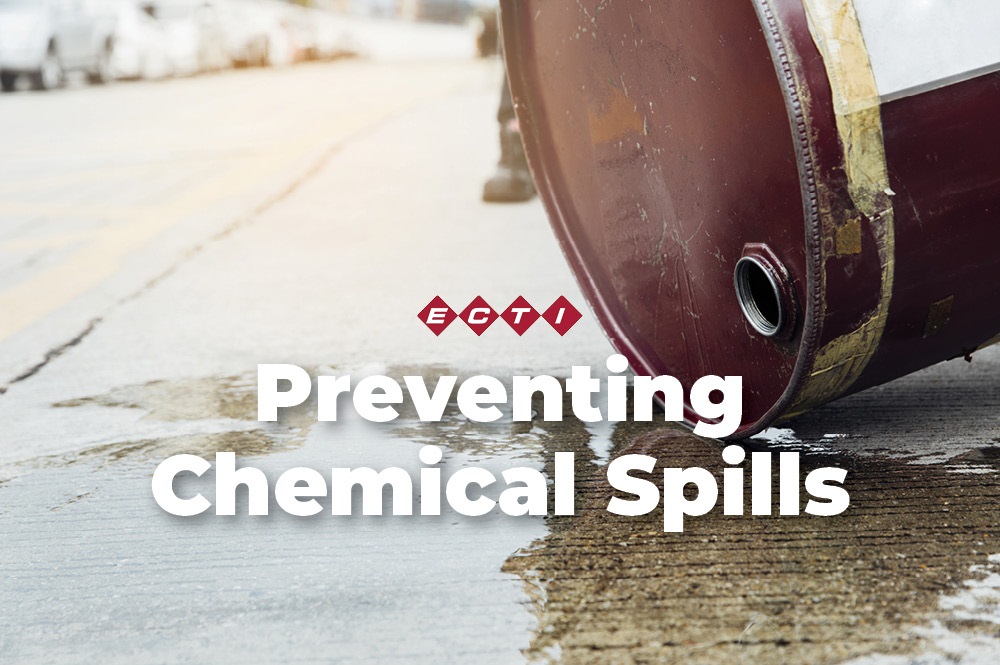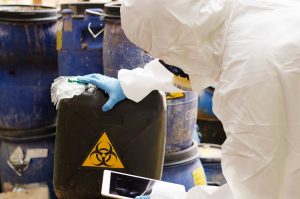
28 Feb Chemical Spill Prevention
 When it comes to your workplace, nothing should be prioritized over the safety of your employees. As your greatest asset to your business, they should feel safe in their work environment. Maintaining a safe work environment is a particularly important consideration for companies who work with or store hazardous materials. And it is not only critical for the appeasement of the Occupational Health and Safety Administration (OSHA) and the Environmental Protection Agency (EPA) requirements but the well-being and safety of your employees. That’s why, in this article, we will discuss chemical spill prevention in your workplace facility.
When it comes to your workplace, nothing should be prioritized over the safety of your employees. As your greatest asset to your business, they should feel safe in their work environment. Maintaining a safe work environment is a particularly important consideration for companies who work with or store hazardous materials. And it is not only critical for the appeasement of the Occupational Health and Safety Administration (OSHA) and the Environmental Protection Agency (EPA) requirements but the well-being and safety of your employees. That’s why, in this article, we will discuss chemical spill prevention in your workplace facility.Follow these steps regarding your everyday handling, transporting, and storing of hazardous chemicals. Doing so will help maintain the safety of your workplace and may aid in your preparation for any mishap. With these tips and precautionary warnings, your facility and workers will be better prepared for chemical spill prevention and to minimize damages should a spill occur.
Chemical spill prevention steps:
- Plan. Create a chemical spill response plan so that you and your team are prepared for this event. Though you will aim to prevent any malfunction or mishap, it is essential to know what to do in this case of an emergency. Be sure that this plan is shared with all employees and that they are able to execute solutions should the need arise.
- Store. Hazardous materials can cause significant harm to humans, the environment, and property. And so, it is critical that these are stored in covered areas on secure shelving where they are not exposed to external elements like rain, which can prompt a spill and even increase its severity.
- Label. OSHA regulations require proper labeling. So, it is legally necessary that all companies who carry, handle, or transport hazardous chemicals must clearly label all chemical storage containers. Despite this law, however, correctly labeling is an essential step in ensuring the safety of your employees and facility. Doing so will clearly establish which containers hold each element and what precautions to take when handling that particular container. Labeling might also help in a speedy cleanup in the event of a spill.
- Educate. Employees and staff members should be adequately trained in planning, chemical storage, and spill containment labeling. They should also be equipped with a thorough understanding of how and when to take action in an emergency. Education and adequate training should be prioritized in your workplace so that everyone is aware of possible spill scenarios and how to respond to one.
We at ECTI prioritize the safety of people and the protection of the environment and property. And as such, it is our mission to properly remove and transport hazardous materials in emergent and routine services alike. We hope that your facility and employees share this concern for safety and prioritize chemical spill prevention and that as a result, you are not faced with an emergency. However, in the case that you require hazardous waste removal or transportation, do not hesitate to reach out to us at ECTI. We are here to serve your needs with expertise and top-tier customer service!

No Comments